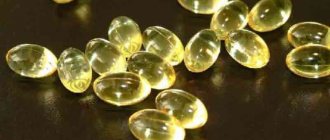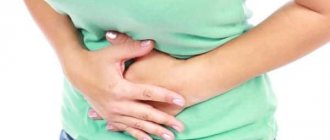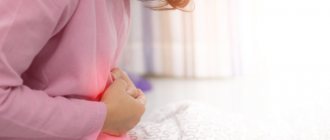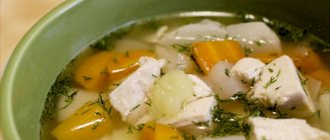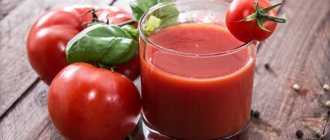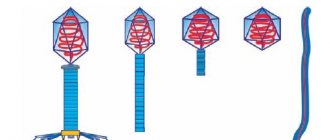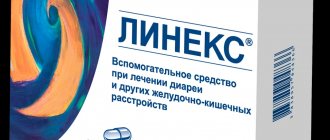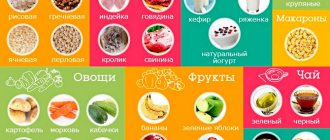Despite the fact that today many different methods and medications have been developed against pancreatitis, herbal remedies are still considered useful.
Herbal medicine can regulate metabolic processes in the body, correct the production of digestive juices, hormones and enzymes, relieve pain and inflammatory processes. In addition, regular intake of the mixture helps improve digestion and consolidates remission in chronic pancreatitis.
The role of herbal medicine in the treatment of disease
The advisability of using any herbal remedies should be determined through a comprehensive diagnosis of the patient. At the same time, contraindicated herbs and those that must be present in the treatment complex are determined.
The main work in the treatment of pancreatitis is taken by medications that regulate the condition of the pancreas. Herbal infusions are most often included in the complex in order to relieve symptoms and improve digestion. Thus, the main role of these agents is to complement the main therapy. However, to a greater extent this applies to the acute type of inflammation.
For chronic pancreatitis, herbal medicine can be a good alternative to classical methods, especially during pregnancy and breastfeeding, as well as in the presence of contraindications to the use of medications. The results from the courses must be supported by adherence to the regimen and therapeutic diet.
The plants that make up the herbal mixture help regulate the level of digestive juices, the outflow of bile and the restoration of tissue in the affected pancreas. In addition, most herbs can also increase and strengthen resistance to other diseases.
A.V.Kvashnin
St. Petersburg State Healthcare Institution "City Geriatric Medical and Social Center"
Pancreatitis is distinguished between acute and chronic. Acute inflammation of the gland is accompanied by dysfunction of the gland itself, distant organs and local complications (necrosis, abscess, pseudocysts).
Chronic pancreatitis is a polyetiological inflammatory disease of the gland, accompanied by a progressive decrease in the secretory and endocrine function of the gland; histologically manifests itself as fibrosis, atrophy and signs of chronic inflammation (mono, lymphocytic infiltration).
In acute and chronic pancreatitis, one of the leading syndromes is pain. About 100% of patients with exacerbation of chronic pancreatitis complain of abdominal pain, in 50% the pain is almost constant [3].
The mechanisms of pain in chronic pancreatitis are as follows:
1. Increased pressure in the gland ducts and tissue ischemia [4]
2. Peripancreatic inflammation [7, 25]
3. Fibrosis and microvascular ischemia [15, 24]
4. Inflammation of intrapancreatic nerves [19, 21-23].
Herbal medicine for pain in chronic pancreatitis
1) Analgesic plants used for high pressure in the gland ducts (antisecretory)
An increase in pressure in the ducts of the gland occurs against the background of preserved secretory ability of the gland and impaired patency of the ducts caused by strictures or duct stones. The pressure in the ducts during obstruction reaches 18-48 mm Hg. Art., in patients without obstruction 7-16 mm Hg. Art. Increased pressure in the ducts and pressure in the parenchyma of the organ causes ischemia and pain. It has been noted that as the secretory ability of the gland decreases, the pain syndrome disappears; this usually occurs 5-18 years after the onset of pancreatitis and coincides with calcification of the gland, the development of diabetes and steatorrhea [4].
Sage , Salvia officinalis, and the Lamiaceae family have antisecretory activity (central antisecretory effect)
Sage is used in a daily dose of 10-15 g of dry raw materials, which should be crushed, pour 200 ml of boiling water, and keep in a thermos for 10-15 minutes. Then cool for 10-15 minutes, strain, squeeze out the remainder and apply the resulting infusion internally, 15 minutes before meals. The course of treatment should not exceed 2 weeks.
Complications from an overdose of sage: tachyarrhythmia; when used together with warfarin, it enhances the effect of the latter.
Volodushka , Bupleurum L., family Umbelliferae, inhibits the secretion of glands [6].
Volodushka is used in a daily dose of 10-20 g of dry raw materials, which should be crushed, pour 200 ml of boiling water, and keep in a thermos for 10-15 minutes. Then cool for 10-15 minutes, strain, squeeze out the remainder and apply the resulting infusion internally, 15 minutes before meals. The course of treatment should not exceed 2 weeks.
Complications of an overdose of volodushka: sedation in some patients, increased peristalsis.
2) Analgesic plants that limit peripancreatic inflammation
Pancreatic juice contains 4 main groups of enzymes: amylolytic, nucleolytic, lipolytic and proteolytic, as well as proelastase and prophospholipase.
The maintenance of peripancreatic inflammation is facilitated by the autoaggressive action of gland enzymes, which is facilitated by:
- increased pressure in the ducts during obstruction, which increases the concentration of enzymes
- direct damage to acinar cells (drugs and alcohol)
- disruption of intracellular transport of enzymes and their intracellular activation
- high concentration of neutrophil elastase and other enzymes at the site of inflammation.
At a high concentration of enzymes inside the gland, their autoactivation occurs (trypsinogen is activated by lysosomal cathepsin, trypsin is activated by other proenzymes - prophospholipase and proelastase, which also play a role in autocleavage processes). Local damage triggers an inflammatory process, which, spreading to the descending duodenum, leads to fibrosis, stenosis and causes pain [25]. Peripancreatic inflammation can also cause stenosis of the distal part of the common bile duct, which is also associated with severe abdominal pain [7].
The most dangerous in this regard is alcoholic pancreatitis. Alcohol and its metabolite acetaldehyde cause damage by changing membrane fluidity, increasing the secretion of abnormal enzymes (amylase, trypsinogen, chymotrypsinogen), which leads to the penetration of enzymes into the organ parenchyma and the development of inflammation.
Plants that reduce enzyme autoaggression include:
Hibiscus , Hibiscus sabdariffa L. (Malvaceae), whose anthocyanins have anti-elastase activity, which is important for inhibiting pancreatic and neutrophil elastase released at the site of inflammation. Hibiscus is also an inhibitor of pancreatic alpha amylase [8].
Hibiscus is used in a daily dose of 10-15 g of dry raw materials, which should be crushed, pour 200 ml of boiling water, and keep in a thermos for 10-15 minutes. Then cool for 10-15 minutes, strain, squeeze out the remainder and apply the resulting infusion internally, 15 minutes before meals. The course of treatment should not exceed 2 weeks.
Complications of hibiscus overdose: relatively non-toxic, sedative effect when used in very large doses.
We recommend the common cuff , Alchemilla vulgaris L, whose flavonoids are inhibitors of trypsin, elastase and alpha-chymotrypsin [9].
A cuff is used in a daily dose of 20-30 g of dry raw materials, which should be crushed, pour 200 ml of boiling water, and keep in a thermos for 10-15 minutes. Then cool for 10-15 minutes, strain, squeeze out the remainder and apply the resulting infusion internally, 15 minutes before meals. The course of treatment should not exceed 2 weeks.
Complications of cuff overdose: no toxicity data available.
Plants that reduce inflammation include:
Tansy , Tanacetum vulgare L., containing parthenolides, which reduce neutrophil infiltration and NFkB activity (an intracellular regulator of the synthesis of pro-inflammatory cytokines).
Tansy is used in a daily dose of 2-5 g of dry raw materials, which should be crushed, pour 200 ml of boiling water, and keep in a thermos for 10-15 minutes. Then cool for 10-15 minutes, strain, squeeze out the remainder and apply the resulting infusion internally, 15 minutes before meals. The course of treatment should not exceed 2 weeks.
Complications from an overdose of tansy: inflammation of the mucous membranes of the mouth and tongue, increased heart rate, not recommended for pregnant women and children under 2 years of age.
Licorice, Glycyrrhiza glabra L, containing glycyrrhizic acid (Glycyrrhinic-Acid) which has antihistamine properties. Histamine receptor antagonists reduce the expression of cell adhesion proteins, chemotaxis of eosinophils and neutrophils to the site of inflammation and the synthesis of proinflammatory cytokines (indirectly through NFkB), reduce the release of lysosomal enzymes from macrophages, eosinophils, basophils (N Engl J Med 2004;351:2203-17).
Licorice rhizome is used in a daily dose of 10-15 g of dry raw materials, which should be crushed, pour 200 ml of boiling water, and keep in a thermos for 30 minutes, shaking occasionally. Then cool for 10-15 minutes, strain, squeeze out the remainder and apply the resulting decoction internally, 15 minutes before meals. The course of treatment should not exceed 5-7 days.
Complications from an overdose of licorice: arterial hypertension caused by a slowdown in cortisol metabolism, edema.
Common barberry , Berberis vulgaris L., contains berberine, which can reduce the production of IL-8 (interleukin-8 is involved in the migration and activation of PMN neutrophils) [10-14].
Barberry bark and root are used in a daily dose of 5-7 g of dry raw materials, which should be crushed, pour 200 ml of boiling water, and keep in a thermos for 30 minutes, shaking occasionally. Then cool for 10-15 minutes, strain, squeeze out the remainder and apply the resulting decoction internally, 15 minutes before meals. The course of treatment should not exceed 5-7 days.
Complications from an overdose of barberry: vomiting, diarrhea, exacerbation of interstitial nephritis.
3) Analgesic plants used for microvascular ischemia and fibrosis
Pain syndrome is associated with the activity of pancreatic stellate cells that produce collagen. Their contractile potential and perivascular location serve as the basis for microvascular ischemia and pain [15, 24].
of Sage also reduce the activity of stellate cells and reduce the phenomena of microcirculatory ischemia . Lamiaceae. Rosmarinic acid, which is part of sage, reduces the deposition of fibronectin, type 4 collagen and fibrin. Sage roots inhibit the “myocyte-activating factor” of stellate cells, a promoter of fibrosis [16, 17].
Sage roots are used in a daily dose of 5-10 g of dry raw materials, which should be crushed, pour 200 ml of boiling water, and keep in a thermos for 30 minutes, shaking occasionally. Then cool for 10-15 minutes, strain, squeeze out the remainder and apply the resulting decoction internally, 15 minutes before meals. The course of treatment should not exceed 5-7 days.
Rhodiola rosea prevents ischemic damage to the pancreas (18).
Rhodiola roots are used in a daily dose of 5-10 g of dry raw materials, which should be crushed, pour 200 ml of boiling water, and keep in a thermos for 30 minutes, shaking occasionally. Then cool for 10-15 minutes, strain, squeeze out the remainder and apply the resulting decoction internally, 15 minutes before meals. The course of treatment should not exceed 5-7 days.
Complications of an overdose of Rhodiola: mental agitation accompanied by insomnia.
4) Analgesic plants used for inflammation of intrapancreatic nerves
Inflammation of the intrapancreatic nerves causes pain because the perineurium, into which biologically active materials from the extracellular matrix penetrate, is damaged [21]. Pain results from prolonged stimulation of sensory nerves. Substance P and calcitonin gene-related peptide are increased in afferent fibers in chronic pancreatitis [22]. The concentration of immune cells and eosinophils is increased in the perineural space after recent alcohol consumption [19], and eosinophil degranulation is implicated as a pain generating factor [23].
Celery , Apium graveolens L. (umbelliferous family), contains apiole, an antineuralgic component.
Use celery root in a daily dose of 5-10 g of dry raw material, which should be crushed, pour 200 ml of boiling water, keep in a thermos for 30 minutes, shaking occasionally. Then cool for 10-15 minutes, strain, squeeze out the remainder and apply the resulting decoction internally, 15 minutes before meals. The course of treatment should not exceed 5-7 days.
Complications of an overdose of celery: angioedema, blistering reaction, sedation. Since it is a secretion stimulant, its use for pancreatitis is limited.
The antineuralgic effect is characteristic of parthenolides contained in tansy (see above).
St. John's wort , Hypericum perforatum, fam. St. John's wort, contains hyperforin, which reduces the reuptake of serotonin, dopamine and norepinephrine, and also reduces the density of serotonin receptors. These properties explain the effect of St. John's wort on “nerve pain” [20].
St. John's wort is used in a daily dose of 15-20 g of dry raw materials, which should be crushed, pour 200 ml of boiling water, and keep in a thermos for 10-15 minutes. Then cool for 10-15 minutes, strain, squeeze out the remainder and apply the resulting infusion internally, 15 minutes before meals. The course of treatment should not exceed 2 weeks.
Complications from an overdose of St. John's wort: sedative effect, use is limited in pancreatitis with symptoms of duct obstruction due to the choleretic effect.
Herbal infusions recommended for chronic pancreatitis
An increase in the effectiveness of treatment is achieved by using herbal mixtures, which contain plants selected taking into account the pathogenetic characteristics of the disease.
Collection for “exacerbation of chronic pancreatitis” is recommended only with the permission of the attending physician, under the control of amylase and CRP.
| Sage | 10,0 |
| Cuff | 15,0 |
| Tansy | 2,0 |
| Licorice | 10,0 |
The collection is used in a daily dose of 37.0 g of raw materials, which should be crushed with a knife or mortar and mixed. Brew in 300 ml of boiling water in a thermos for 30 minutes, shaking occasionally. Cool for 10-15 minutes. Use the resulting decoction orally, 15 minutes before meals, in 2-3 doses throughout the day. The severity of pain is assessed using a visual analogue scale (VAS) and the patient’s ability to self-care. The course of treatment with the indicated collection is 5 days. If amylase and CRP levels do not decrease to normal within 3 days, and the pain syndrome does not disappear, then you should notify your doctor and interrupt the herbal treatment yourself.
An example of a collection that “normalizes the secretory and motor functions of the choledochal-pancreatic system and has an anti-inflammatory effect” [1]:
| Anise fruit | 10,0 |
| Celandine grass | 10,0 |
| Corn silk | 10,0 |
| Dandelion root | 10,0 |
| Knotweed grass | 10,0 |
| St. John's wort herb | 10,0 |
| Violets tricolor herb | 10,0 |
The decoction is taken warm, 1 glass 3 times a day, 20-30 minutes before meals.
Comments on the above collection.
Celandine is considered as a possible hepatotoxic plant. Celandine has a choleretic property, which can lead to a worsening of pancreatitis due to obstruction of the gland ducts. Corn silk and dandelion are also known choleretic herbal remedies and can be used with caution when confirming the patency of the glandular ducts.
Collection “for chronic pancreatitis” [2]:
| Elecampane tall, roots | 10,0 |
| St. John's wort, herb | 10,0 |
| Calendula officinalis, flowers | 10,0 |
| Large burdock, roots | 10,0 |
| Wormwood, herb | 10,0 |
| Chamomile, flowers | 10,0 |
| Marsh grass, grass | 10,0 |
| Horsetail, grass | 10,0 |
| Trifid succession, grass | 10,0 |
| Salvia officinalis, leaf | 10,0 |
Prepare an infusion, take 1/2-1/3 cup 3 times a day 30 minutes before meals, for chronic pancreatitis.
Conclusion
Pain syndrome in chronic pancreatitis has a complex pathogenesis. Modern understanding of its components makes it possible to successfully use not only pharmacotherapeutic treatment, but also modern evidence-based herbal medicine.
Literature
1. Sokolov S.Ya. Zamotaev I.P. Chronic pancreatitis // In the book: Handbook of medicinal plants. Phytotherapy. M., 1989.
2. Pastushenkov L.V. Pastushenkov A.L. Medicinal plants. Lenizdat, 1990.
3. Essentials Of Surgery - Scientific Principles And Practice By Lazar J, 2nd Ed (1997) Chapter 31 “Chronic pancreatitis” Kenric M Murayama.
4. Ebbehoj N Pancreatic tissue pressure and pain in chronic pancreatitis Pancreas 1986,1, 556.
5. Spoerke DG.- Herbal medications. - Santa Barbara.CA - 1980.
6. Amagaya S.- General pharmacological properties of Tj-9 extract.- Phytomedicine 1998.5(3).165-75/
7. Makrauer FL Duodenal stenosis in chronic pancreatitis: clinicalpathological correlations Dig Dis Sci 1982, 27, 525.
8. Hansawasdi, C., Kawabata, J., and Kasai, T., Alpha-amylase inhibitors from roselle (Hibiscus sabdariffa Linn.)
tea, Biosci. Biotechnol. Biochem., 64(5):1041-3, 2000.
9. Jonadet M.-Flavonoids extracted from Ribes nigrum L and Alchemilla vulgaris L.:1. In vitro inhibitory activities on elastase, trypsine and chymotrypsine.-J.Pharmacol.1986.17(1).21
10. Ivanovska N and Philipov S (1996) Study on the anti-inflammatory action of Berberis vulgaris root extract, alkaloid fractions and pure alkaloid. Int J Immunopharmacol 18:553–561.
11. Ina K, Kusugami K, Yamaguchi T, Imada A, Hosokawa T, Ohsuga M, Shinoda M, Ando T, Ito K and Yokoyama Y (1997) Mucosal interleukin-8 is involved in neutrophil migration and binding to extracellular matrix in inflammation bowel disease. Am J Gastroenterol 92:1342–1346.
12. Mitsuyama K, Toyonaga A, Sasaki E, Watanabe K, Tateishi H, Nishiyama T, Saiki T, Ikeda H, Tsuruta O and Tanikawa K (1994) IL-8 as an important chemoattractant for neutrophils in ulcerative colitis and Crohn's disease. Clin Exp Immunol 96:432–436.
13. Izzo RS, Witkon K, Chen AI, Hadjiyane C, Weinstein MI and Pellecchia C (1993) Neutrophil-activating peptide (interleukin-8) in colonic mucosa from patients with Crohn's disease. Scand J Gastroenterol 28:296–300.
14. THE JOURNAL OF PHARMACOLOGY AND EXPERIMENTAL THERAPEUTICS Vol. 294, No. 3 2000 The Effect of Berberine Chloride on Experimental Colitis in Rats In Vivo and In Vitro HAIYAN ZHOU and SATORU MINESHITA
15. Bachem MG Identification, culture, and characterization of pancreatic stellate cells in rats and humans Gastroenterology 1998,115,421
16. Chang H Advances in Chinese Medical Materials Research Symposium 1984, 217, 559-80
17. M. Bishr Omary. — The pancreatic stellate cell: a star on the rise in pancreatic diseases.- The Jou\r\nal of Clinical Investigation.- Volume 117 Number 1 January 2007. R 50-59.
18. Ip S.- Association of free radicals and the tissue renin-angiotensin system: prospective effects of Rhodiola, a genus of Chinese herb, on hypoxia-induced of pancreatic injury.- JOP 2001.2.16-25
19. Di Sebastiano P Immune cell infiltration and growth - associated protein 43 expression correlates with pain in chronic pancreatitis Gastroenterology 1997, 112, 1648
20. Chatterjee S.-Hyperforin as a possible antidepressant component of Hypericum extracts.- Life Sci 1998.63(6).499-510
21. Bockman DE.- Analysis of nerves in chronic pancreatitis.- Gastroenterology.-1988.-94.-1459.
22. Buchler M.- Distribution of neurotransmitters in afferent human pancreatic nerves.- Digestion.-1988.-38.-8.
23. Keith RG.- Neuropathology of chronic pancreatitis in humans.- Can J Surg.- 1985.-28.-207.
24. Wells RG.- Pancreatic stellate cells: the new stars of chronic pancreatitis?.-(Editorial).- Gastroenterology.-1998.-115.-491.
25. Kloppel G.- Pathology of chronic pancreatitis and pancreatic pain.- Acta Chir Scand.-1990.-156.-261.
The use of pharmaceutical complex herbal preparations
In order to facilitate the task of independently forming plant complexes, it is useful to resort to purchasing ready-made pharmaceutical complex preparations. In addition, such products are produced in the correct ratios of all components and the recommended dosages are indicated. The drugs can become not only an excellent alternative to modern medications, but also a means to consolidate the results of their use.
The best pharmacy kits include sophora fruit, Jerusalem artichoke, burdock, chicory, lingonberry, blueberry and other herbs. As a rule, they are used immediately before a meal (half an hour before) to improve digestion and prevent possible problems.
Herbal infusions are sold through pharmacy chains without doctor's prescriptions. The average cost of one package of twenty sachets (or one hundred grams in crumbly form) is fifty to one hundred rubles.
Contraindications and precautions
Each individual medicinal drink has its own contraindications. One of the most common is individual intolerance to the composition of the drug and a tendency to allergic reactions. However, there are other possible restrictions on admission:
- cholelithiasis;
- stomach ulcers;
- renal failure;
- chronic constipation, obstruction;
- tendency to allergic reactions.
In the event of an attack of exacerbation of chronic inflammation, the use of the drugs must be discontinued. It is possible to choose a drug only on the recommendation of the attending physician, who can also set the exact dosage.
Terms of use
In order for the use of medications to bring maximum benefit and not contribute to the deterioration of the patient’s condition, it is important to follow the recommendations:
- Carefully study the instructions for use . The package inserts indicate restrictions on use, possible side effects, and recommended dosages.
- Follow your doctor's advice . It is strictly forbidden to exceed the suggested dosages, even if they are allowed in the instructions.
- Steep boiling water can reduce the effectiveness of drugs . Therefore, before pouring a dose of the collection with hot water, it is recommended to cool it to seventy to eighty degrees. Be sure to boil water before use.
- It is important to take the drink half an hour before meals.
- Before use, the collection must be cooled to a comfortable temperature . Hot product is not acceptable for consumption.
- It is not necessary to completely replace drug treatment with herbal medicine . This can be harmful and even dangerous.
- The use of products by pregnant and nursing mothers should occur under the close supervision and supervision of doctors .
Thus, herbal medicine will be as beneficial and harmless to the patient’s health as possible.
Popular pharmacy herbal preparations
Among pharmaceutical products, Collection No. 2 is popular. It contains plant components from the Caucasus: blueberries and lingonberries, chicory, Jerusalem artichoke, yarrow beans and others. Also, ready-made “Monastery tea” and Tibetan tea are used to treat pancreatitis.
There are other drugs sold through pharmacies under various names and prepared by patients at home:
- immortelle and calendula flowers, motherwort leaves;
- immortelle flowers, buckthorn, mint and dill leaves, thyme;
- calamus, mint and medicinal nettle leaves, dandelion root and leaves, valerian;
- St. John's wort herb, string, chamomile flowers, burdock, horsetail.
All these components can be prepared independently or purchased separately at the pharmacy.
Treatment of pancreatitis in women with folk remedies
Overweight women in the age group of 30–60 years are at particular risk. Folk remedies for the treatment of pancreatitis in women do not have any particular specificity - except that the weaker sex is more responsible about the diet that is prescribed to be followed for this disease.
Treatment for pancreatitis in adult women with folk remedies has a positive effect: a decoction of golden mustache, tincture of chamomile and immortelle, sea buckthorn and olive oil.
Advice! Do not use oils to treat pancreatitis in the acute stage of the disease!
Properties of base components
Each herb individually has its own properties that are beneficial for digestion in conditions of inflammatory processes. When collected, they can enhance beneficial qualities, which is why it is recommended to group them.
Beneficial properties of the most commonly used herbal ingredients:
- Dandelion root and leaves . As part of medicinal preparations, it improves digestion and appetite, promotes the production of bile and the removal of excess fluid from the body.
- Immortelle . It has bactericidal properties, relieves pain and spasms, relieves inflammation and improves bile production.
- Calendula . Relieves inflammation and spasms, improves the production of enzymes, has a diuretic and choleretic effect. Collections with calendula improve digestive processes, regulate the production of gastric juice and accelerate tissue healing.
- Elecampane . Normalizes metabolic processes, relieves spasms and eliminates excess fluid from the body, increases the level of immunity.
- Mint . Eliminates nausea, calms, relieves pain, improves bile flow and gastrointestinal function.
- Series . Prevents abscesses and relieves inflammation, regulates appetite, improves metabolism, removes toxins from the gastrointestinal system.
- Dill seeds . Replenishes vitamins and minerals, has a calming effect, relieves pain, relieves inflammation and spasms.
Treatment of pancreatitis in men with folk remedies
One of the most common causes of pancreatitis is alcohol abuse. It is not surprising that the stronger sex is more susceptible to this disease. For pancreatitis, treatment in adult men with folk remedies should begin as soon as possible. In addition, do not forget about the golden rule of “rest, cold and hunger.”
Chicory, agrimony, burdock, as well as various herbs that already contain all the medicinal herbs in the right proportions can be recommended to men as a treatment for pancreatitis.
The effectiveness of herbal remedies for illness
The effectiveness of medicinal preparations directly depends on the quality of the composition, as well as on the components and their ratio. Preparations of this type solve the following problems:
- enhance the effect of medication use;
- prevent new attacks and relapses of pancreatitis;
- reduce the likelihood of negative side effects from the main therapy;
- regulate digestive processes;
- partially or completely restore the functions of the pancreas;
- improve quality of life, reduce the consequences of gland dysfunction;
- protect other organs from complications;
- help expand the therapeutic diet.
Many medicinal herbs help replenish the lack of vitamins and minerals in the body and have a beneficial effect on other organs of the gastrointestinal tract and other body systems.
Pancreatitis and traditional medicine
Effective treatment of pancreatitis requires drug therapy prescribed by the attending physician after the necessary diagnostic procedures. A therapeutic diet plays an important role, without which taking medications will not give the expected effect. Diet therapy involves eliminating foods that irritate the digestive system from a sick person’s diet. Alcohol is extremely harmful because it destroys pancreatic tissue; drinks based on ethyl alcohol should not be consumed at the slightest suspicion of pancreatitis.
Doctors recommend taking herbs for pancreatitis as an additional and effective method of treatment. Remember, herbal medicine is applicable only in the absence of complications and easing of symptoms of exacerbation.
Herbs for the treatment of pancreatitis exhibit an analgesic effect, help reduce inflammation and increase the ability to regenerate. Before giving preference to plants for the treatment of the inflammatory process of the pancreas, it is necessary to study the properties: herbs that stimulate the functioning of an important organ in the digestive system cannot be included in the medicinal herbal collection. You will need to know which infusions and decoctions are recommended to drink and which are not.
Effective home recipes for inflammatory processes
You can prepare most herbal preparations, including traditional medicine, at home. Among the most effective and safe recipes:
- Mix one part each of dried cucumber, calendula and peppermint, add one and a half parts of yarrow. Pour two tablespoons into half a liter of water, heat over low heat for fifteen minutes and leave for an hour. Divide the composition into two doses, morning and evening.
- Mix three parts each of cumin seeds and dried nettle, add one part each of valerian, calamus and yarrow. Pour five grams of the mixture into a glass of water and boil for half an hour over low heat. Divide into three doses for use throughout the day.
- Mix thirty grams of peppermint and dill, add ten grams of immortelle and chamomile, as well as twenty grams of hawthorn fruit. Pour a glass of boiling water and leave for two hours. Divide into two doses.
- Mix a teaspoon each of St. John's wort, violet, linden, peppermint and chamomile. This composition must be poured with boiling water and consumed three times daily instead of regular tea.
